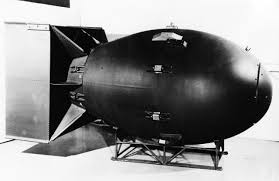Nagasaki: A City of Resilience and History

Introduction
Nagasaki, a port city located on the island of Kyushu in Japan, holds a unique place in global history, particularly due to its tragic past as one of the two cities affected by atomic bombings during World War II. The significance of Nagasaki extends beyond its historical events; to many, it represents resilience, peace, and reconciliation. As the world reflects upon the implications of nuclear warfare, Nagasaki stands as a vital reminder of humanity’s capacity for recovery and hope.
The History of Nagasaki
Nagasaki was founded as a small fishing village and gradually transformed into a prominent trading port during the 16th century. This city was Japan’s window to the West, as it was the only port allowed to trade with Europe during Japan’s period of isolation. However, on August 9, 1945, Nagasaki became the target of the second atomic bomb, resulting in catastrophic destruction and loss of life. The bomb, named “Fat Man,” obliterated a significant portion of the city and left many survivors grappling with the psychological and physical aftermath of the attack.
Rebuilding and Resilience
In the decades following the war, Nagasaki underwent extensive rebuilding efforts. Today, it is a vibrant city known for its picturesque hills, beautiful gardens, and unique blend of Japanese and Western influences. The city’s transformation is evident in landmarks such as the Nagasaki Peace Park, which commemorates the victims of the bombing and advocates for global peace. Every August, memorial services are held to honour those lost, and Nagasaki’s citizens dedicate themselves to spreading the message of peace and the prevention of nuclear weapons.
Modern Day Nagasaki
In recent years, Nagasaki has also gained attention for its cultural significance and tourism attractions. Visitors flock to see the Glover Garden, the beautiful Nagasaki Chinatown, and the stunning night views from Mount Inasa. Additionally, the Nagasaki Kunchi Festival, held annually, showcases the city’s rich cultural traditions and community spirit, attracting both locals and tourists alike. The legacy of Nagasaki continues to evolve as it retains a deep sense of history while celebrating its contemporary culture.
Conclusion
Nagasaki stands as both a historical landmark and a thriving modern city. Its journey from devastation to revival serves as a profound testament to resilience and hope. As the world grapples with ongoing global tensions, Nagasaki serves not only as a reminder of the past but also as an emblem of peace and the possibility for a better future. For those exploring this remarkable city, the lessons learned from its history remain of crucial importance, inspiring visitors to reflect on the need for unity and understanding in an ever-divided world.








